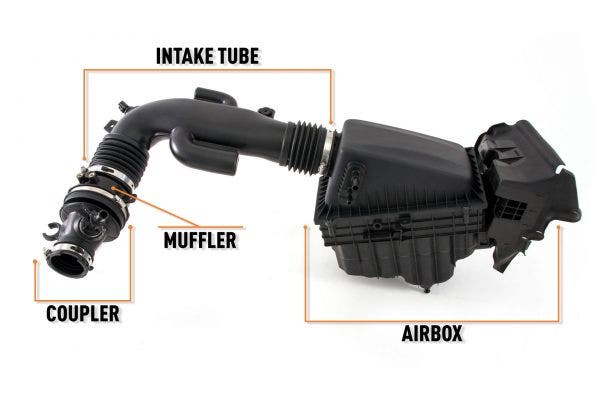
Breathing Fresh Air - Intake R&D, Part 2: 3D Scan
As the weather here in Delaware continues to get colder,
I've resigned myself to only leaving the house to avoid starvation or getting
fired (and it's not even really cold here). As much as I hate the cold, I'm
reminded every morning that my turbocharged car loves it. The only thing better
than cold, dense air for a turbocharged engine is more cold, dense air. Once
the winter months turn into spring and summer, more of us will be out enjoying
the warm air, but your 2.0T Jeep JL will be longing for the cold of winter. At
Mishimoto, we've been working to give your Jeep the cool air it needs to
perform its best all year long.

The first post on our 2018+ JL 2.0L turbo intake focused on every aspect of the stock intake system. If you missed that post, I suggest going back and reading it because there are a lot of parts to this intake. While we're moving on to our intake's design, we're not quite done with the stock intake yet. After all, a high-flowing, great-sounding, power-adding intake is useless if it doesn't fit under the hood. Before we could design our intake, we needed to know where each piece needed to live. Our engineers call it the envelope.

To map the intake's envelope and its mounting points, our
engineer broke out the Faro 3D laser scanner. This 3D scanner measures 560,000
points every second to translate physical parts into digital space. With that digital
model, our engineer can design our intake around the stock envelope and ensure
that it fits like a glove and any improvements we make don't interfere with any
other components in the engine bay. Our engineer meticulously removed each
component and scanned every inch of the stock intake.

With the intake scanned, we moved on to scanning the engine
bay. It might seem like the scans of the intake are our priority, but it's the
scan of the engine bay that gives us the most critical information. Scanning
the engine bay lets us know where we have room to make components larger or
take out bends. And for a project like
an intake, where volume and flow are paramount, knowing your available space is
vital. Our engineer took her time to scan every component the intake meets
along its path to the engine. In the end, we were left with perfect 3D models
of the stock intake and the space where our replacement would reside. Envelope
complete.

In the next post, we'll be using the 3D data we gathered to
design a higher-flowing, better-performing intake. We'll start with a digital
model, then make a physical prototype to begin testing with. Soon your 2.0T JL
will be able to breathe fresh air through a Mishimoto intake. Keep an eye out
for the next post and, as always, let us know what you think.




